|
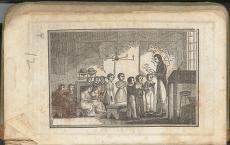
Frontispiece "The Young Reader; To Go With The Spelling Book"
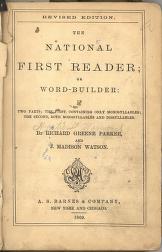
"The National First Reader; or Word-Builder"

Schoolroom at the Mill and Bars: Recitation Day
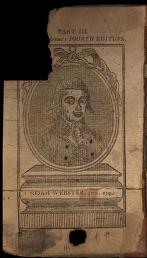
"An American Selection of Lessons in Reading and Speaking"
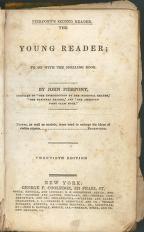
"The Young Reader; To Go With The Spelling Book"
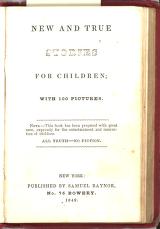
"New And True Stories For Children, With 100 Pictures"
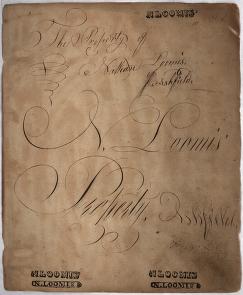
Nathan Loomis' Copy Book

"The New England Primer"

"The New McGuffey Second Reader"
|
Summary and Objective
After comparing readers and primers of the 19th century with those they use each day in their own classrooms, students will understand that those used in earlier times were often used not only to teach reading, but to teach moral lessons, as well.
Teaching Plan
Step 1.
Pre-Teaching: Read teacher background article "Schools and Schoolbooks - 1780-1820" (http://www.americancenturies.mass.edu/classroom/curriculum_6th/lesson12/bkgdessay.html).
Step 2.
Before you begin, prepare packets of copies for each student of pages 1 and 11-14 of "New England Primer," and of page 73 of "New And True Stories For Children, With 100 Pictures." These items are found at the American Centuries website. Teachers of younger children may want to print copies of the documents, plus copies with the "show text" option to make the reading easier. Teachers may also prepare small (stapled) "copy books" into which students could paste cut-outs of the pages above printed from the American Centuries website. These can then be used in Step 5. Also, students could use these copy books in Step 7 and add their own pages.
Step 3.
Begin your activity online at the American Centuries website. Go to Frontispiece "The Young Reader; To Go With The Spelling Book" and do the online "Educated Citizen" activity. Compare what you read and see in this activity with your students' own classroom learning environments. How are they the same? How are they different?
Step 4.
Give students the packets of primer copies. Point out to students that in the 19th century, schools did not provide reading books; parents were expected to purchase them. Talk about how this is different today. Where do schools get the books that are used for reading lessons? Have the students look at the text. What do they notice? How are various letters / fonts the same as or different from the fonts in their own readers? (example: "s" looks like "f" in the old text) Note: the extended "s" is used only in certain positions and doesn't entirely replace the "s" as we know it. Older students might look at some text that uses it and try to figure out the rule.
Step 5.
Read together some of the pages printed from the primers. What are these texts talking about? From where do some of the ideas ("Adam's fall") and characters (Samuel, God, Adam, etc.) come? Do modern-day readers have similar texts? How are they the same? How are they different? For older elementary students, discuss the acceptability of the moral lessons provided in the early texts. Would they be accepable in modern schools? Why or why not?
Step 6.
Review and wrap-up discussion.
Step 7.
Further Activity: Offer students the opportunity to create their own reading primer pages. (See Step 2 above.)
|




